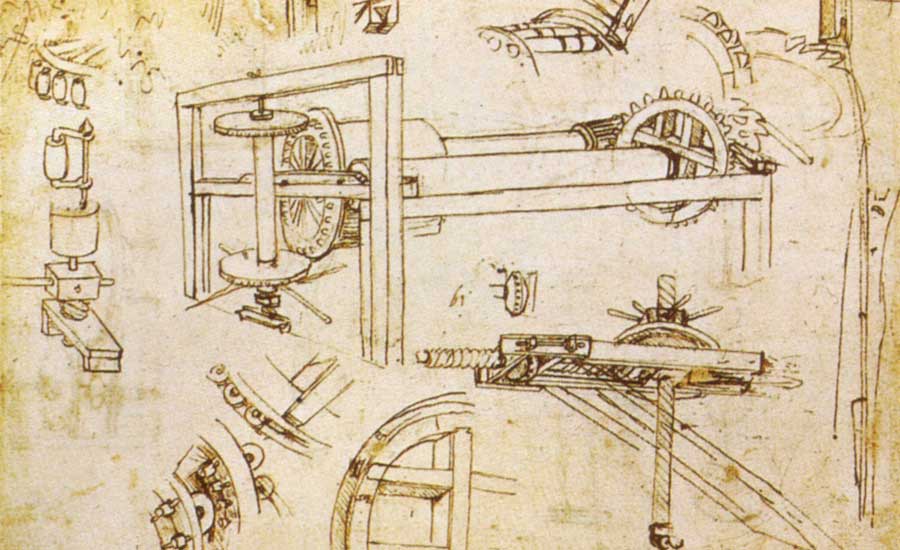In 1871, engineer James Watt patented a steam engine that, for the first time, produced continuous rotary motion. Steam engines figuratively and literally drove the Industrial Revolution and introduced the expression “build a head of steam.”

When that critical pressure is applied to pistons, things happen. Engines begin to move, drive productive devices and propel load-carrying vehicles.
Construction sector professionals and organizations must strive to achieve the same momentum by building a head of STEAM—that is, by adding the "a" to STEM, the already developed skill levels in science, technology, engineering and mathematics.
That "a" is knowledge of and skill in the arts.
The combination may seem odd to technically educated professionals. But by embracing the broad and exploratory STEAM mindset and engaging both sides of our individual and collective brains, we will generate more personal and organizational productivity, innovation and enhanced service to clients, customers and stakeholders.
Using the Whole Brain
“Half a brain is better than none. A whole brain would be better,” said well-known arts innovator and educator Betty Edwards, author of Drawing on the Right Side of the Brain.
That much-lauded 1979 drawing-instruction guide and its revision also appealed more broadly.
Said Amazon in a book review: "People from just about every walk of life—artists, students, corporate executives, architects, real estate agents, designers, engineers—have applied its revolutionary approach to problem solving."
A STEAM perspective gives us a better understanding of how almost everything connects to everything else to the extent that science, technology, engineering, art, and mathematics help us comprehend the increasingly complex world around us.
The “everything is connected to everything” realization enables individuals and organizations to be more aware of the consequences of our actions and empowers us to recognize many and varied opportunities.
Leonardo da Vinci set the standard for building a head of STEAM at the individual level. He was a competent scientist, technologist, engineer, artist, and mathematician.
As a scientist, he conducted the first documented autopsy and, two centuries before Newton, described the essence of Newton’s first law. The technologist in him conducted experiments and constructed maps and he engineered canals and fortresses. As an artist and mathematician, he showed artists how to portray three-dimensional effects on a two-dimensional medium.
We probably won’t become da Vinci-level geniuses, but we can see in him the potential power of a whole-brain approach and the promise of building heads of STEAM in ourselves and others.
More recently, Apple founder and innovator Steve Jobs attributed the firm’s success to combining technology with the arts. “We believe that it’s technology married with the humanities that yields us the result that makes our heart sing,” he said.
Closer to our industry, the late Richard Weingardt, an accomplished structural engineer, entrepreneur, author, artist and leadership advocate, illustrates the STEAM mindset, as does Santiago Calatrava, the Spanish engineer, architect, sculptor and painter who said: “In my hands, there is a little bit of architecture and engineering.”
Experience and studies show that homogeneous teams—made up of those only STEM-skilled or just arts-oriented—will tend to experience high communication effectiveness and require little time to make decisions, but unfortunately, will reach results that are low in creativity and innovation.
In contrast, heterogeneous teams comprised of both STEM and arts members will take longer to make decisions but arrive at much more creative and innovative results.
Build Your Head of STEAM
If you're deeply into STEM by virtue of interests and vocation, on a whim, enroll in a one-day drawing class or sign up for ballroom dancing lessons. Urge deeply arts-focused colleagues to read some science and engineering articles, audit an engineering class or visit an automobile manufacturing plant.
To those in a leadership or management position in a business, government or other organization, help your personnel understand STEAM and how embracing it could benefit them, their employer and those you serve. Ask colleagues to share, at “brown bags,” their art or STEM passions. You and others will be surprised and inspired by the variety of talents in your midst.
As a manager in any kind of organization, assemble and charge highly diverse groups when you form ad hoc or long-term teams. Expect early communication frustration but innovative results later.
Does your workplace provide a STEAM-compatible culture and physical environment? Culture means the way things really work around here.
Frankly speaking, the environments and cultures in most public, business, and academic organizations frustrate or kill creativity and innovation, intentionally or unintentionally, despite the creative pronouncements of their spokespersons.
When leading an engineering design effort, engage someone from the arts community as a regular or intermittent team member. Explain what you are designing and what it is supposed to do and for whom, and invite him or her to weigh in during the design process.
Because of the artist’s different perspectives, you are likely to receive fresh suggestions about the form and function of the object of your design and/or how to communicate its essence to decision makers and users.
As an inquisitive person, you have a growth or exploratory—as opposed to fixed—mindset. Commit to researching and writing a paper on a subject that bridges from your STEM orientation to the arts.
You will learn much how both sides are needed to propel an idea or innovation forward.
Stuart G. Walesh is an independent consultant-teacher-writer who previously worked for engineering firms, in government and in academia. This viewpoint is adapted from his book Introduction to Creativity and Innovation for Engineers published by Pearson in 2017. He can be reached at stuwalesh@comcast.net.





Post a comment to this article
Report Abusive Comment